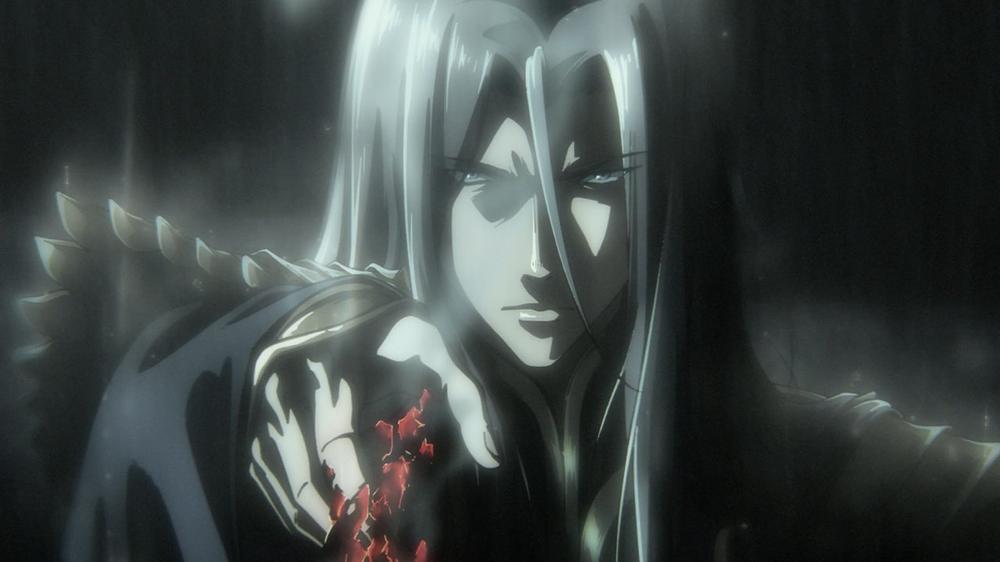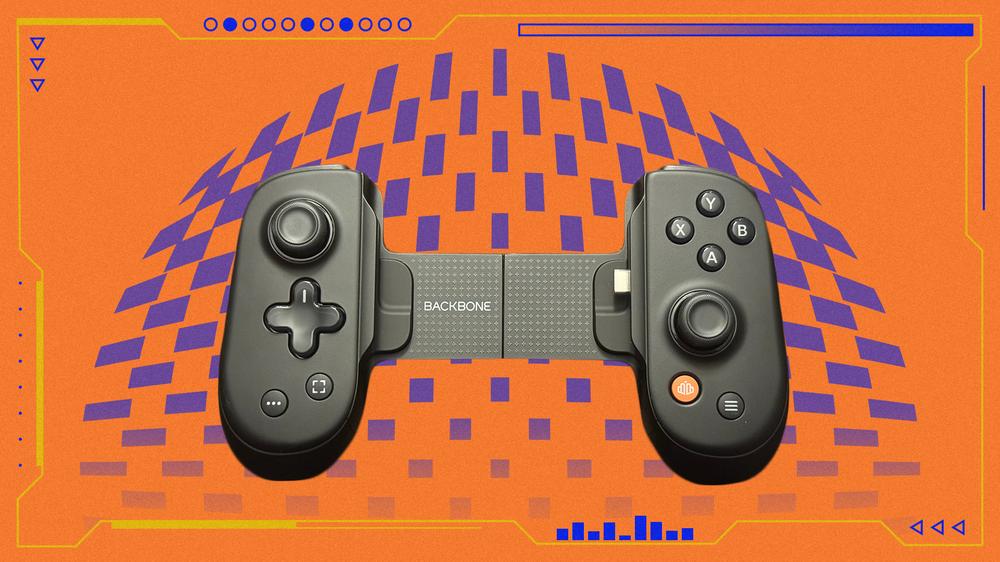Often, we attach a certain descriptor to the fans of particular gaming genres. Someone might be a shooter aficionado or a puzzle expert, maybe a sports enthusiast, each eliciting a certain image that we might associate with a particular audience. Then there are the lovers of tough action games, those of us who take joy in friction, revel in the struggle. Or as we like to call ourselves, sickos. At Tokyo Game Show 2025, this sicko went hands-on with Phantom Blade 0, the highly anticipated upcoming action RPG from S-Game. With an arsenal of ferocious weapons, brutal finishers, and savage enemies, it has all the makings of a bloody good time. After an hour of uninterrupted combat, boss battles, and more than a few deaths, I came away with one question: how soon can I schedule my sick days?
Sophisticated Swordplay
You play as Soul, an assassin framed for the murder of the head of his order. Our journey with him in this demo begins at the bottom of the canyon. After just a few steps, we encounter an enemy camp. There will be no easing into battle, as a pair of foot soldiers charge, followed by a spear-wielder mounted on a horse, while a bowman in a nearby tower takes aim. If it’s a fight they want, it’s a fight they’ll get, as I pull out my sword and start jockeying for position.
Phantom Blade 0 is an action game, first and foremost. Combatants, you included, have a health bar and a Sha-Chi meter. The former does exactly what you’d expect, while the latter acts as a mix of stamina, skill, power, and energy for special attacks. It’s not stamina-based combat in the strict Soulslike sense; you can do things like throw out basic attacks or dodge without fear of losing your ability to defend yourself. But you do need it to fuel your more powerful Sha-Chi (aka heavy) attacks, and it is consumed while blocking. If you or an enemy runs out of Sha-Chi, you become breached, which breaks your stance and leaves you extremely vulnerable until it refills.
I take a few arrows for my trouble, but manage to carve through the small detachment. As the enemy's health and Sha-Chi drops, I’m able to execute finishers, aka dazzling flourishes that eliminate enemies in brutal and bloody ways. As I push forward, I come across a small bell suspended from a short wooden stand. With a flick, it rings out, revealing a portion of the map. This also functions as a respawn area and fast travel point, similar to a bonfire from Dark Souls.
Executing a block just as an attack arrives allows you to parry the blow, and I learned quickly that these aren’t just a defensive option; they are an essential part of combat. Not only do they negate incoming damage without draining your Sha-Chi, but they also deplete that of the attacker. Sure, you might be able to breach one enemy with pure aggression, but against tougher foes or groups, all of whom are only too eager to start beating on you at once, that’s not going to cut it. The best option isn’t necessarily to go in sword-a-flailing, like in Ninja Gaiden, or take turns parrying like in Sekiro; it’s almost like a middle ground where elements of both converge, giving the combat a very distinct feeling as you push forward, invite attacks, then parry and riposte.
That’s not to say there isn’t a place for dodging. Enemies launch special attacks called Brutal Moves and Killer Moves; the former are meant to be parried, the latter dodged. Using the right type of defense results in you performing a Ghostep, a really slick-looking teleport dodge that leads directly into a counterattack. That comes in handy as I climb the rickety scaffolding up the cliffside. I stealth kill one swordsman on the climb, but fail to get a spearman, and have to rely heavily on those Ghosteps as he and the three buddies he calls over take turns trying to turn me into a pincushion.
Death is Only the Beginning
My first death comes around 15 minutes into my demo. After fighting across several isolated platforms, I face off against a pair of spear users. I strike one down quickly, but eat too many shots in my aggression. I try to take a more measured approach with the second, though, and as soon as I try to create space, I’m killed by an explosive arrow from some far-off archer. My life ends, punctuated with a crimson “Dead” scrawled across the screen.
Moments later, I awaken at the Bell stand from before. Unlike a Souls game, where visiting a Site of Grace or equivalent brings fallen enemies back to life, everyone I’ve defeated remains dead. There are no runes to collect, or battles to be refought, but that doesn’t mean death is without consequences. Soul has 66 days to complete his mission, and every death costs him one of them. Now, how strict that limit is or whether or not we can get days back is unclear, but I certainly feel the pressure to stay alive and not waste any of that potentially limited time by dying if I can avoid it.
I decide it’s time to switch up my armaments a bit. Soul can equip two weapons for general combat, and two Phantom Edges, which are limited-use items, like a powerful bow and arrow or Man-Cutter, an enormous halberd that can crush enemies with a charged smash attack. Each weapon has unique combinations and comes with some sort of perk or special ability. Sanguine, your default long sword, can launch a rapid succession of tumbling attacks, which is great for shredding a breached enemy.
I had been leaning on Seamless Death, a pair of Chakram-like weapons that can be used for fast up close combinations, or thrown to do solid damage from a distance. Now I decide to give Jagged Edge, the enormous greatsword, a go, as I return to the site of my death and enact my revenge on the remaining spear soldier. I have to run to avoid the incoming fire from the bowman across the chasm, and eventually find a route to some platforms I can use to get across, executing an excellent wall-run into an instant kill of a swordsman I caught unawares along the way.
I ring a bell here, establishing a new respawn point, and jump down towards another pair of bow-and-arrow-equipped enemies. I land atop one, executing a throw-and-stab combo to kill him in one fell swoop, then separate the head and body of his buddy with a finisher, creating a satisfying fountain of blood. A short while later, I’m ambushed by a pair of dagger wielders; rather than defeat them with my blade, I call upon Flaming Mane, one of my Phantom Edges. This takes the form of a flame-spewing lion mask, quickly burning up both of my adversaries, opening the way for me to advance.
Revel in the Struggle
Eventually, I reach a large open area at the bottom of the cliffs. After fighting through a few groups of enemies, it’s time to take on my first boss. Enter Wan Jun “Coppermaul”, a towering figure built like The Butcher from Diablo, with a massive warhammer that perfectly matches his sheer mass. I quickly learn he fights dirty too, as he scatters dirt into my face with his weapon, covering the screen to obscure my visibility. Getting caught in that proves a fatal mistake as he grabs me, lines me up, and crushes me with a swing that would make Cal Raleigh proud.
Undeterred, I return to give him another go. His wild swings are powerful, but I quickly get the timing down to parry most of his attacks, taking large chunks out of his Shi-Chi with each combination. Once he is breached, I press the attack hard using the Soft Snake Sword, a flexible, almost whip-like blade that dishes damage quickly. There are a few dicey moments, but the thrill of victory is mine as I take down the giant. It’s a cool fight, and a solid example of how important learning boss patterns on the fly will be. I add Bashpole, as his weapon is called, to my arsenal as a Phantom Edge. Using it to smash through a wooden floor to reach a new passageway, I press on.
The next boss comes as a complete surprise. As I made my way through some sort of village, I climbed to the roof of a round building. Standing dramatically atop a small spire at the center was Red Wraith. It was an intimidating entrance despite her smaller frame, made doubly so by the total lack of cutscene, gate, or any other sort of forewarning. She immediately presses the attack with her longsword and some sort of thrown blade, but I manage to Ghosteps to quickly break her guard. Something seems off, though – the fight seems almost too easy, which doesn’t go unnoticed by Soul, and he suggests that we could leave her be and flee if we wanted. Curiosity gets the better of me and I make a hasty retreat, leaving the Red Wraith behind – a decision that would come back to haunt me.
A few skirmishes later, I reach the final boss of the demo, the Chief Disciple of the Seven Stars. He leads a team of six other warriors, and, even as a veteran of many, many action games, I have to admit this is one of the more impressive boss fights in recent memory. Each warrior has their own health bar, including the Chief Disciple, with the boss's health bar, and they seamlessly switch between acting independently and striking as one. One moment I’m isolating one enemy, chipping away at their health, then suddenly the entire group converges on me with a coordinated thrust attack from all directions, as my perfectly timed dodge allows me to leap their collective attack, and land gracefully upon the combined tips of all their weapons.
It’s a gorgeous spectacle, and each time I chip away at the Chief Disciple's health in this intricate dance of steel, his followers heal him, sacrificing their own health in the process. I continuously chip away at the group, using a leaping smash from Bashpole to send everyone flying when I’m in danger of being overwhelmed. As their numbers dwindle, the Chief Disciple changes tactics, giving away his health to make sure there are at least three followers at his side at all times. This proves his folly, as I take advantage of his rapidly diminishing strength and drop him with a thrown barrage from Seamless Death.
The fight wa= sn’t over yet, however. His three disciples scattered to a trio of towers, throwing out what resembled thread. The boss, now called the Chief Disciple’s Fallen Hope, rose from the ground like some abomination of a marionette, and the battle began anew. This time it was strictly a 1v1, his ferocious attacks now coming with him dangling as he rushed me with melee attacks and threw a screen-filling barrage of his own threads. Even this I thought I could handle, until I heard a voice call out, “Nothing can separate us, not even in Death!” The Red Wraith had returned, and the combined fury of both bosses was more than I could handle.
I died. Then I died again. And again. Each rematch began at the start of the marionette phase, but time and time again I fell when the Red Wraith arrived, my decision to be merciful earlier haunting me. But dammit if I didn’t learn just a little more each time, get to that last phase with just a little more health each attempt. As I threw myself at what seemed like an impossible fight just a few attempts earlier, I began to see the windows to attack, until finally, my heart pounding in my chest, I struck down the Red Wraith with a leaping finisher from my Seamless Death, withstood the enraged counterattack from The Disciple’s Lost Hope, and severed his strings and head with one last swipe of my sword.
There are three difficulty options to choose from, but even at the default setting that I played at, Phantom Blade 0 is hard, and I loved that about it. It never felt cheap; it just demanded more from me. In just over an hour of play, I was easily ten times the player I was when I started. It’s a feeling of achievement that is reserved for the very best action games on the planet. If the rest is anything like what I played at TGS, I feel like there’s a real chance that Phantom Blade 0 might be one of those games.

 Oregon’s National Guard lawsuit hinges on Trump’s Truth Social posts
Oregon’s National Guard lawsuit hinges on Trump’s Truth Social posts